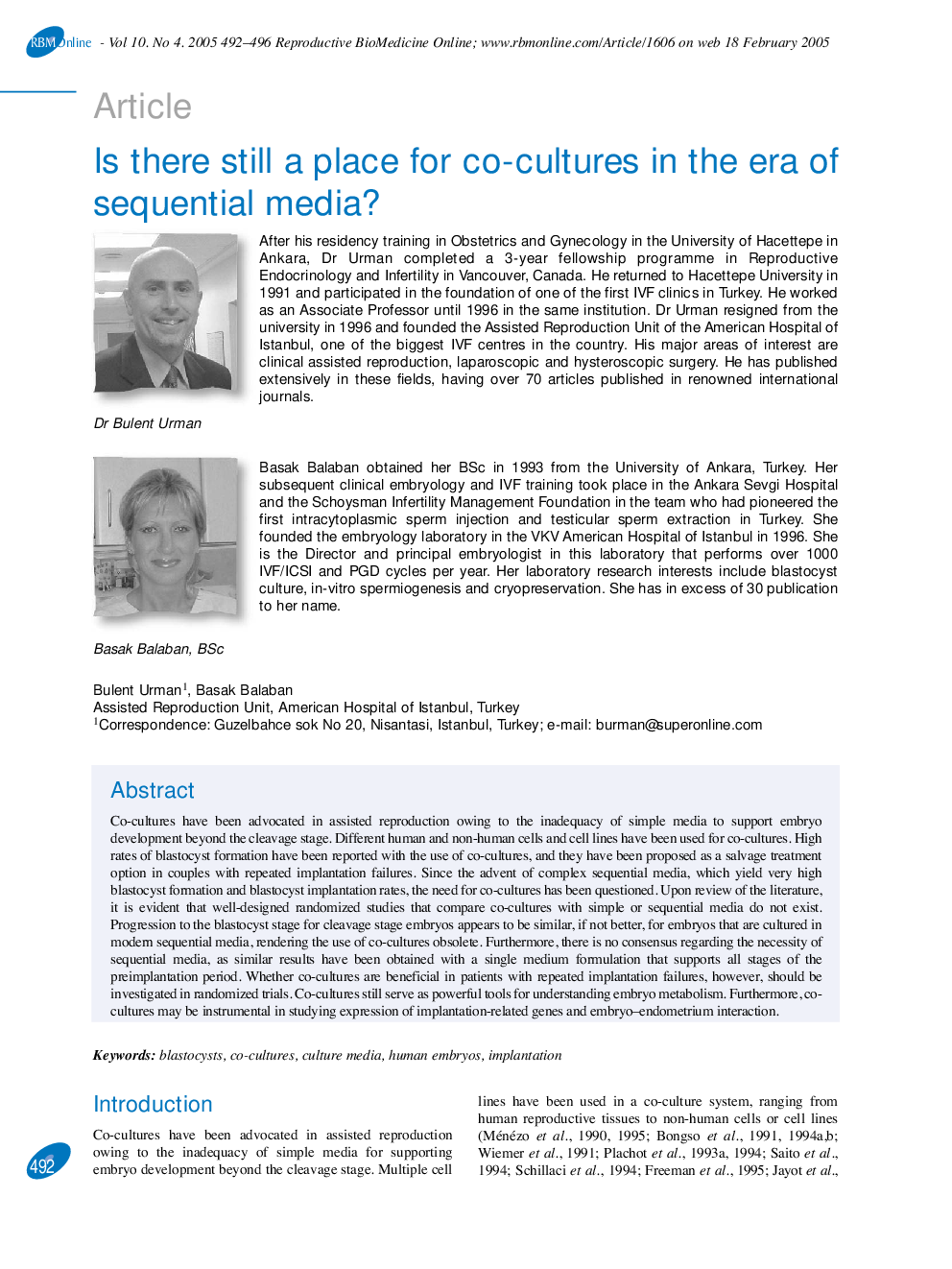| Article ID | Journal | Published Year | Pages | File Type |
|---|---|---|---|---|
| 9334729 | Reproductive BioMedicine Online | 2005 | 5 Pages |
Abstract
Co-cultures have been advocated in assisted reproduction owing to the inadequacy of simple media to support embryo development beyond the cleavage stage. Different human and non-human cells and cell lines have been used for co-cultures. High rates of blastocyst formation have been reported with the use of co-cultures, and they have been proposed as a salvage treatment option in couples with repeated implantation failures. Since the advent of complex sequential media, which yield very high blastocyst formation and blastocyst implantation rates, the need for co-cultures has been questioned. Upon review of the literature, it is evident that well-designed randomized studies that compare co-cultures with simple or sequential media do not exist. Progression to the blastocyst stage for cleavage stage embryos appears to be similar, if not better, for embryos that are cultured in modern sequential media, rendering the use of co-cultures obsolete. Furthermore, there is no consensus regarding the necessity of sequential media, as similar results have been obtained with a single medium formulation that supports all stages of the preimplantation period. Whether co-cultures are beneficial in patients with repeated implantation failures, however, should be investigated in randomized trials. Co-cultures still serve as powerful tools for understanding embryo metabolism. Furthermore, co-cultures may be instrumental in studying expression of implantation-related genes and embryo-endometrium interaction.
Related Topics
Health Sciences
Medicine and Dentistry
Obstetrics, Gynecology and Women's Health
Authors
Basak Balaban, Bulent Urman,
